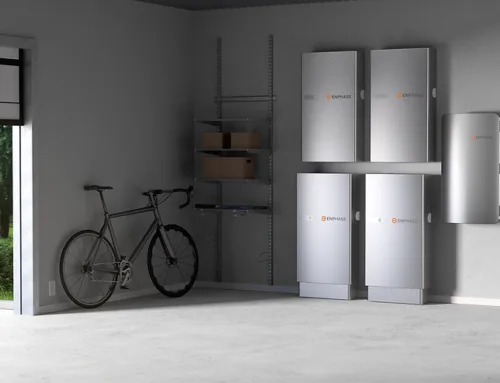
The residential solar tax credit (also known as the 25D Tax Credit) has been a crucial incentive for homeowners across the United States, making solar energy more accessible and affordable. However, this financial benefit is set to phase out by the end of 2025.
If you’ve been contemplating switching to solar power, this is your sign to act quickly. Here’s everything you need to know about the expiring solar tax credits, how it impacts the cost of installation, and why now is the ideal time to invest in solar energy.
What is the Solar Tax Credit?
The solar tax credit, or the 25D Residential Energy Efficient Property Credit, allows homeowners to deduct a percentage of the cost of installing solar energy systems from their federal taxes.
Thanks to its extension by the Inflation Reduction Act, the incentive currently stands at 30% of the total cost, which includes both residential solar panel and battery storage systems. Without this credit, homeowners would need to pay the entire installation cost out of pocket (or financed), a move that could deter many from transitioning to renewable energy.
Yet, as of now, this credit has a potential definitive expiration date at the end of 2025, per the latest updates from the current administration.
Why is the Solar Tax Credit Important?
The solar tax credit has been a powerful tool for driving the adoption of renewable energy in the residential sector. It has shielded homeowners from the upfront costs of solar panels and installation. While solar energy remains a cost-effective investment in the long run, this credit further sweetens the deal by reducing the payback period and increasing financial accessibility.
Key benefits of the solar tax credit include:
– Reduced Costs: Save thousands of dollars on the cost of installing a solar system.
– Broader Adoption: Encourages middle- and lower-income households to go solar.
– Faster Payback Period: With the tax credit offsetting a portion of the cost, the time required to break even with savings on electricity bills is reduced significantly.
The removal of the solar tax credit could mean a substantial slowdown in the shift toward clean energy, particularly for less affluent households that may struggle to afford the higher costs.
How This Affects the Solar Landscape
Without the 30% tax credit, the landscape of residential solar is poised for significant changes, including likely increases in costs for new installations.
For example:
– Higher Total Costs: With the tax credit gone, homeowners will face the full upfront price of solar panels, battery systems, and installation.
– Reduced Accessibility: Many households that previously viewed solar as a manageable investment may find the increased costs prohibitive, widening the gap between income levels and access to renewable energy solutions.
– Potential Installation Delays: More homeowners may rush to secure installations before the tax credit sunsets, leading to longer wait times for installation services.
This confluence of factors underscores the urgency of taking action now, before the solar tax credit vanishes.
Solar Still Makes Sense
Even after the expiration of the solar tax credit, solar energy will continue to be a smart, forward-thinking investment for many households, especially in regions where electricity costs are soaring.
Take California, for example. The state’s notoriously high electricity prices make solar energy a no-brainer for reducing monthly expenses. With or without the tax credit, homeowners in high-cost electricity states will still reap substantial long-term savings by leveraging the power of the sun to generate their energy.
Solar panels also add long-term value to your home, providing clean energy independence and making the property more attractive to future buyers.
Still, given the impending cost adjustments, acting soon can ensure you lock in the best financial benefits before prices rise.
Why Homeowners Shouldn’t Wait
1. Costs Will Go Up
Without the 30% tax credit, the upfront cost of solar will increase after 2025. Taking fast action can help you take full advantage of the current financial incentives.
2. Installation Takes Time
Your solar system must be fully operational by December 31, 2025, to qualify for the tax credit. Since reputable installers often book projects well in advance, now is the time to begin the process and avoid last-minute delays.
3. Avoid a Rush for Installers
The closer we get to the tax credit deadline, the busier installation companies will become. The earlier you sign up with an installer, the better chances you have of securing installation slots that ensure your system is completed on time.
What Steps Should You Take Now?
If you’re on the fence about going solar, here’s your action plan:
1. Schedule a Consultation: Research trusted solar installers and schedule a consultation. Verify their experience, certifications, and expertise.
2. Get a Quote: Request a detailed quote to understand your costs after factoring in the 30% tax credit.
3. Start Planning: Work with your solar provider to finalize your design and apply for necessary permits.
4. Act Quickly: Commit to installation as soon as possible to secure a spot before any rise in demand.
Why Choose Sunriver Solar for your Solar Installation?
At Sunriver Solar, we’ve been helping Northern California families save money and reduce their carbon footprint since 2008.
Here’s what sets us apart:
– Expert Curation from experienced solar professionals to assess your energy needs.
– Ethical Practices centered on honesty, transparency, and customer satisfaction.
– Free Consultations designed to guide you, no strings attached.
– Timely Delivery so your solar system will be complete before the tax credit ends.
Take the first step toward solar today. Contact our family-run business for a free, no-obligation quote and join the growing community of homeowners making the switch to clean energy.
Secure Your Solar Savings Today
The clock is ticking on the solar tax credit, and the price of waiting is too high to ignore. By taking action now, you can lock in lower costs, reduce reliance on fossil fuels, and experience long-term energy savings.
If you’re ready to explore how solar energy can benefit your home and your wallet, we’re here to help. Click below to claim your free consultation and take advantage of the 30% solar tax credit while it lasts.
Get your free quote today: https://estimate.sunriversolar.com/
Contact Us: https://www.sunriversolar.com/contact/
Family Owned and Operated
Establish 2008
530-820-3712
Phone
Working hours
| Monday | 7 AM–4:30 PM |
| Tuesday | 7 AM–4:30 PM |
| Wednesday | 7 AM–4:30 PM |
| Thursday | 7 AM–4:30 PM |
| Friday | 7 AM–4:30 PM |
| Saturday | Closed |
| Sunday | Closed |








